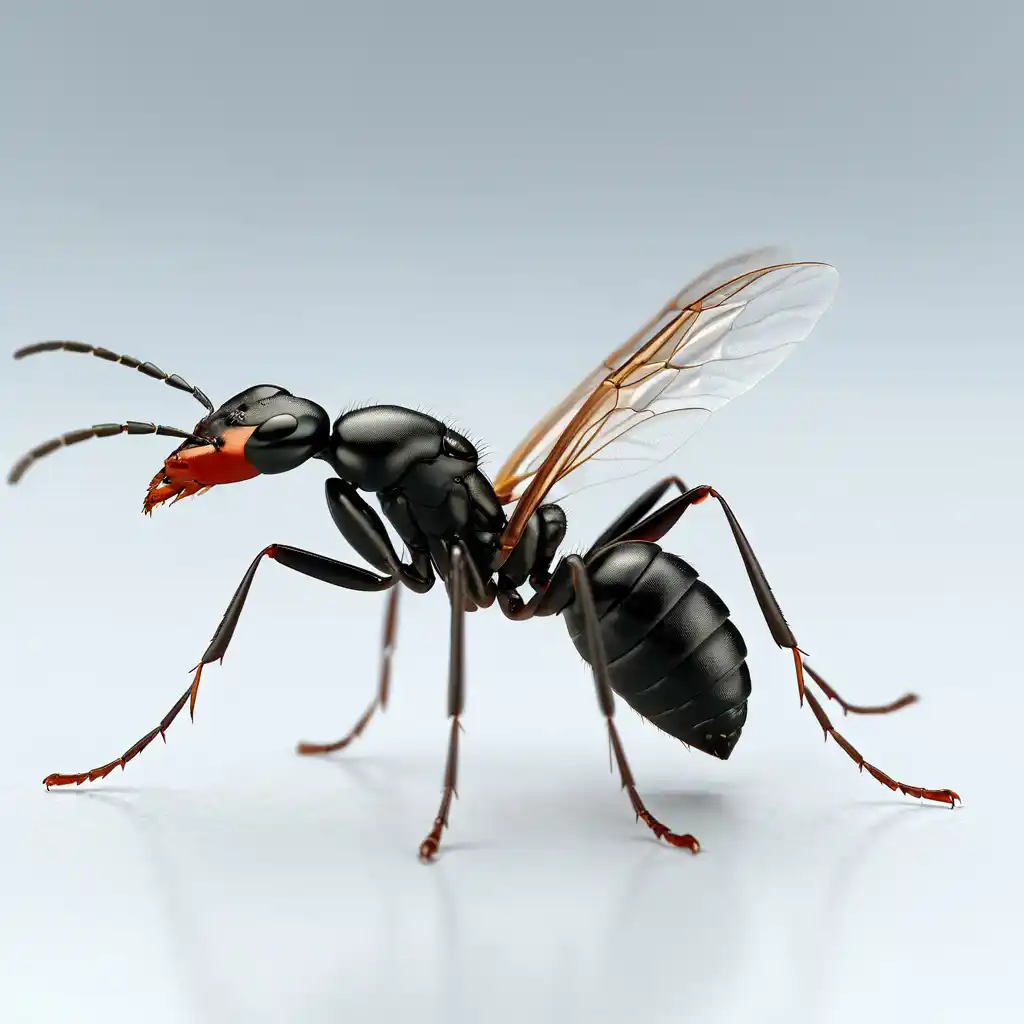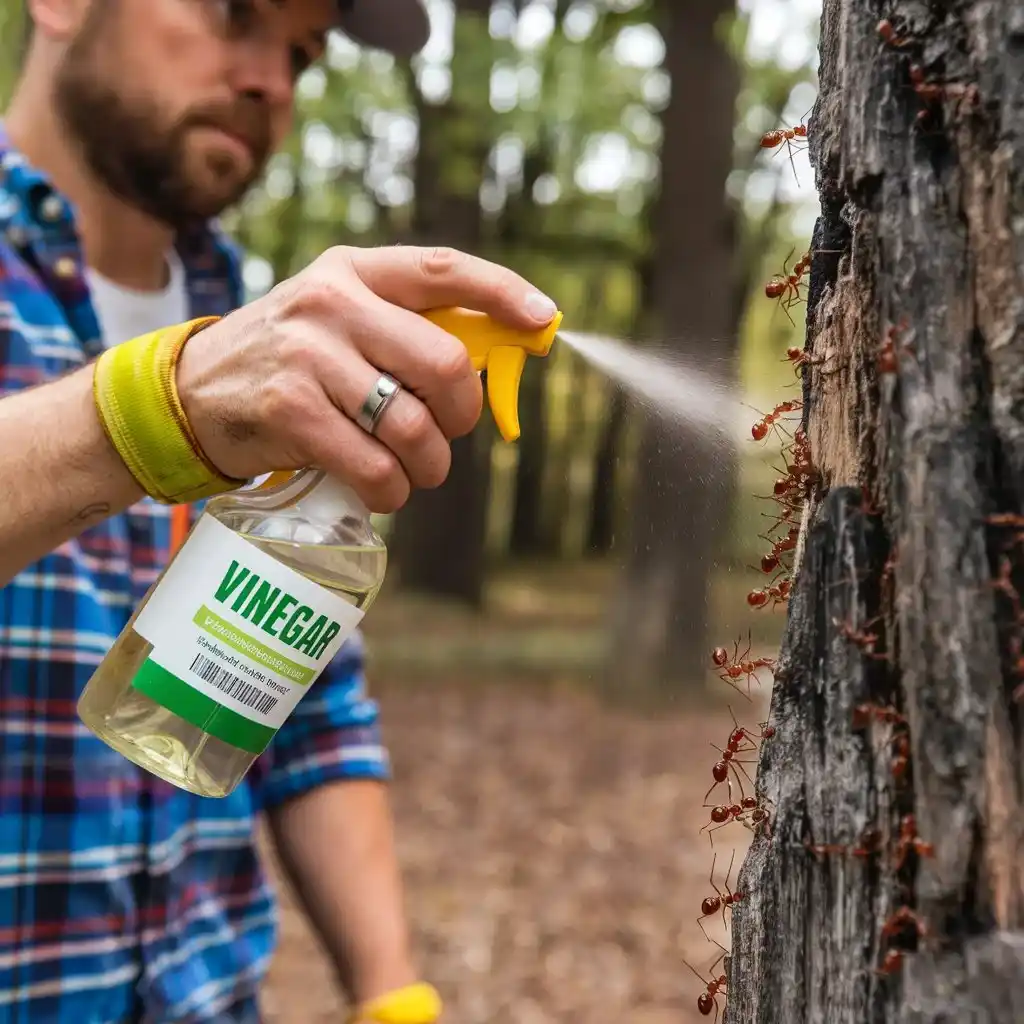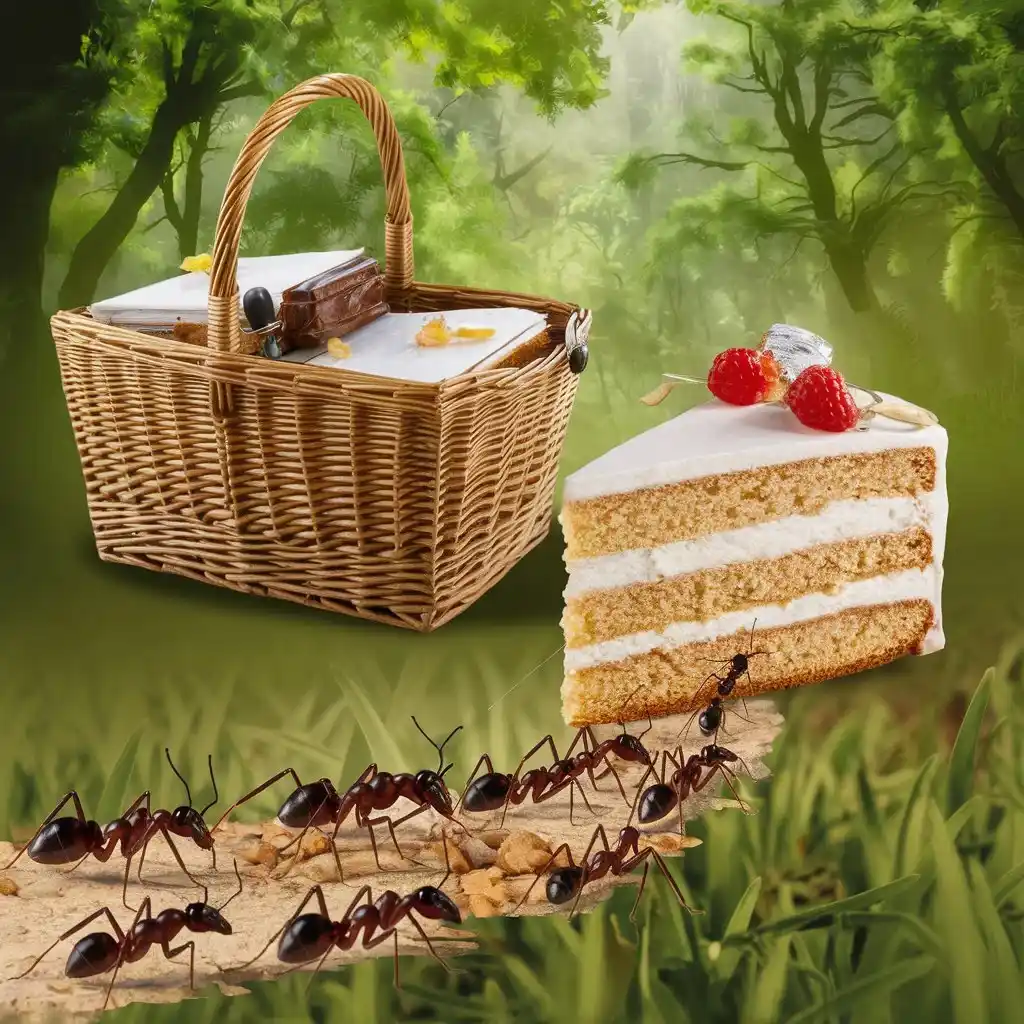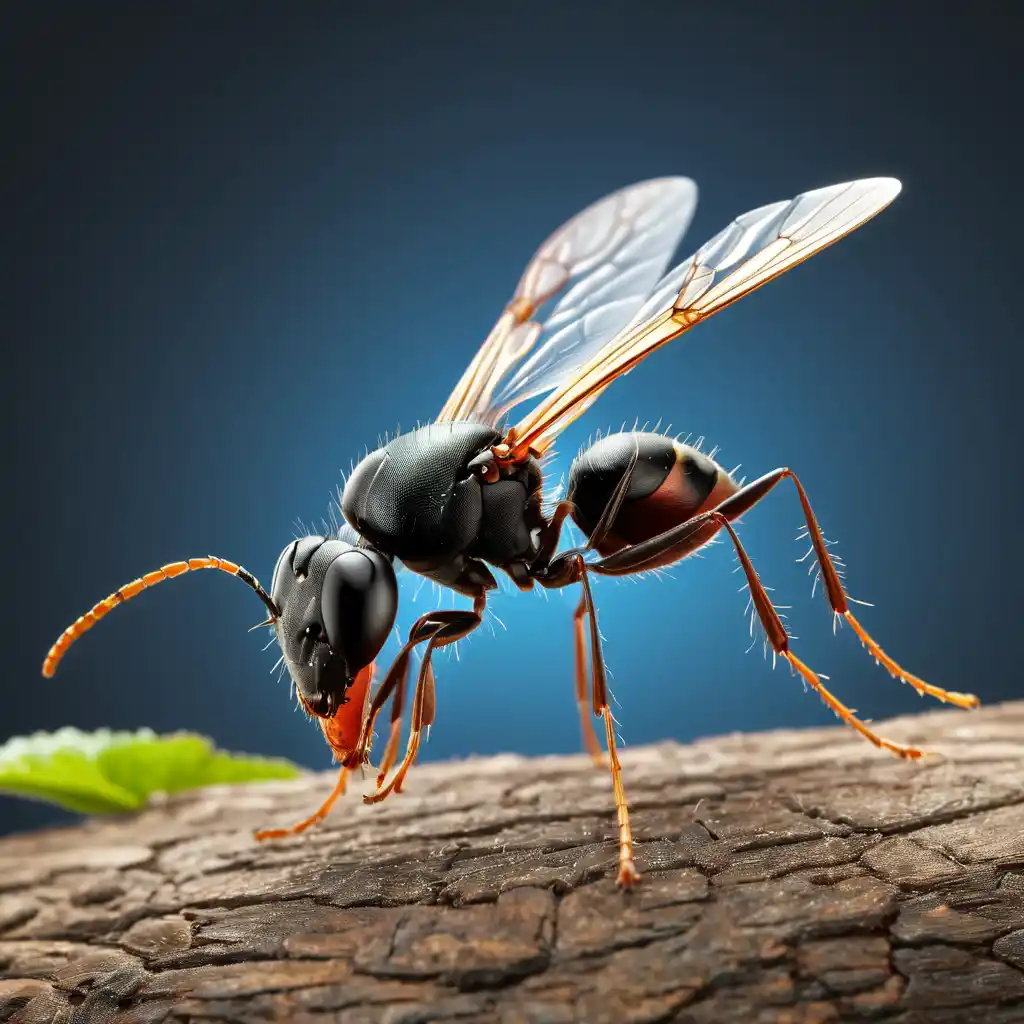Introduction
Get Rid of Flying Ants can be an unexpected and frustrating sight, especially when they appear in swarms around your home during warm weather. Although these insects are a natural part of the ant reproductive cycle, they can quickly become a nuisance. Luckily, there are various DIY and professional strategies to control flying ants and prevent future infestations.
In this guide, we’ll explore how to get rid of flying ants, including the best natural solutions, chemical treatments, and long-term prevention tips. Whether you’re dealing with a small or large infestation, these methods will help you keep your home pest-free.
What Are Flying Ants?

Flying ants, also known as alates, are the reproductive members of an ant colony. They emerge during warm, humid conditions to mate and establish new colonies, often leading to swarms that can be mistaken for termite infestations. However, flying ants and termites are different, and it’s essential to recognize the distinction to choose the right treatment.
Key differences between flying ants and termites:
- Flying ants have a segmented body with a pinched waist, elbowed antennae, and wings of unequal size (front wings larger than back wings).
- Termites have a more uniform body with straight antennae and wings of equal size.
Flying ants are typically harmless, but their presence can be bothersome. Moreover, if they successfully establish new colonies near your home, it can lead to future infestations.
Identifying Flying Ant Swarms in Your Home
A swarm of flying ants is often the first indication of an issue. These swarms typically occur during the summer, with a peak during “flying ant day.” During this period, large numbers of winged ants gather to mate before establishing new colonies.
Signs of Flying Ant Infestation:
- Swarms around windows and doors: Flying ants are attracted to light, so they often swarm around windows and doors in the evening.
- Ant trails: After the swarm, you may notice ant trails leading to entry points in your home.
- Discarded wings: After mating, flying ants shed their wings, which can be found near windows, doors, and other entry points.
Flying ants, especially black garden ants (Lasius niger), are commonly seen in homes. While harmless in small numbers, it’s essential to address the problem early to prevent colonies from becoming established in or near your home.
Natural Solutions to Get Rid of Flying Ants
If you prefer eco-friendly methods, there are several natural solutions to get rid of flying ants without the use of harsh chemicals. These solutions are ideal for smaller infestations and can be implemented quickly and easily.

Strong-Smelling Herbs and Oils
Ants rely on scent trails to navigate, and strong-smelling herbs can disrupt these trails. Here’s how you can use natural repellents:
- Peppermint oil: Mix peppermint oil with water and spray it around entry points and areas where ants are active.
- Cinnamon: Sprinkle ground cinnamon near windows, doors, and other potential entry points. Cinnamon acts as a natural repellent and can keep ants at bay.
- Vinegar: A solution of water and vinegar can be sprayed directly on ants to kill them. The vinegar also disrupts scent trails, preventing other ants from following.
These natural solutions are not only effective at deterring ants but also safe for children and pets.
Vacuuming and Trapping
If you’ve noticed a swarm of flying ants in your home, immediate action is necessary. Here’s how to handle the problem without resorting to chemicals:
- Vacuuming: Use a vacuum cleaner to quickly remove flying ants from your home. Focus on areas around windows, doors, and ceilings where they are most likely to gather.
- Sticky traps: Place sticky traps near entry points to catch flying ants as they enter your home. These traps are effective at reducing the ant population.
Real-life tip: “One summer evening, I found flying ants all over my kitchen window. After using a vacuum to clean them up, I sealed the window frame with silicone to stop more ants from entering.”
DIY Chemical Solutions to Get Rid of Flying Ants
For more severe infestations or when natural remedies don’t work, DIY chemical solutions can help you control flying ants. These treatments are readily available and can be used both indoors and outdoors.
How to Get Rid of Flying Ants using Insecticidal Sprays
Over-the-counter insecticidal sprays are effective at killing flying ants on contact. Here’s how to use them:
- Targeted application: Spray insecticide directly onto flying ants around windows, doors, and baseboards.
- Outdoor use: Use insecticide around the perimeter of your home, focusing on potential entry points such as cracks and gaps.
Be sure to follow the instructions on the insecticide label and avoid using too much spray, especially indoors.
Diatomaceous Earth
Diatomaceous earth is a non-toxic, natural powder made from the fossilized remains of tiny aquatic organisms. It’s safe for humans and pets but deadly to ants and other pests. Here’s how to use it:
- Apply diatomaceous earth around entry points: Sprinkle the powder near windows, doors, and other areas where flying ants may enter your home.
- Use outdoors: You can also apply diatomaceous earth around the perimeter of your home to create a barrier that flying ants will avoid.
Long-Term Prevention of Flying Ants

Prevention is the most effective way to keep flying ants out of your home. By taking proactive steps, you can avoid future infestations.
Seal Entry Points
Flying ants enter homes through cracks and gaps in walls, windows, and doors. Here’s how to keep them out:
- Caulk windows and doors: Use caulk to seal any gaps or cracks around windows, doors, and baseboards.
- Check for holes in screens: Replace or repair damaged window and door screens to prevent flying ants from entering.
- Inspect your home’s foundation: Regularly check for cracks in the foundation and seal them with appropriate materials.
Get Rid of Flying Ants to Keep Your Home Clean
Ants are attracted to food and moisture, so keeping your home clean is essential for preventing infestations. Here’s how to make your home less appealing to ants:
- Clean up food spills: Wipe down countertops and floors after meals to remove crumbs and spills.
- Store food in airtight containers: Keep food in sealed containers to prevent ants from accessing it.
- Fix leaks: Check for leaky faucets and pipes, as moisture attracts flying ants and other pests.
When to Call a Professional
If you’ve tried DIY methods without success or are dealing with a large infestation, it may be time to call in a professional pest control service. Here’s when to seek expert help:
Large Infestations
If you’re facing a massive swarm of flying ants or if ants are consistently entering your home, professional extermination may be necessary. Pest control companies use stronger insecticides and non-chemical methods to treat the infestation and prevent it from returning.
Structural Damage or Health Risks
In rare cases, flying ants can cause structural damage to your home, especially if they’re carpenter ants. Additionally, if anyone in your household is allergic to ant bites or stings, professional extermination is the safest option.
Conclusion
Flying ants are a common, yet frustrating pest that many homeowners face. While they are typically harmless, controlling their presence in your home is essential to prevent new colonies from forming and future infestations. Whether you prefer natural solutions, DIY chemical treatments, or professional pest control, there are numerous ways to effectively get rid of flying ants.
By sealing entry points, keeping your home clean, and acting quickly when swarms appear, you can maintain a pest-free environment. If necessary, don’t hesitate to contact professional pest control services for large infestations or persistent issues.
With the right approach, flying ants won’t be a problem in your home for long. Stay proactive, and you’ll keep these pests at bay.

